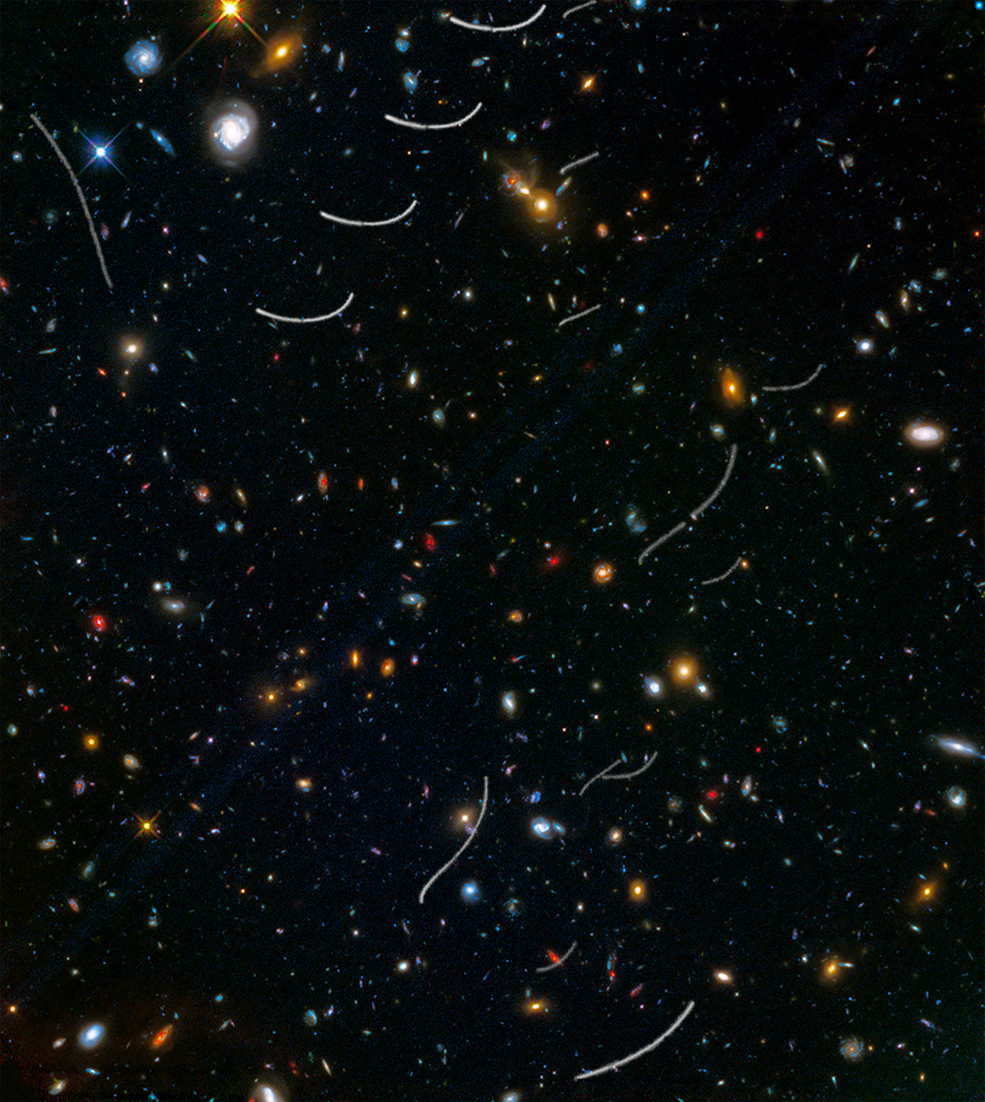Nasa's Hubble captures incredible photo of asteroids photobombing distant galaxies
The Hubble captured an image of a random patch of the sky as part of the Frontier Fields program.



Nasa's Hubble telescope spotted numerous solar system asteroids photobombing various distant galaxies scattered across deep space. Although the asteroids are located at about 160 million miles from the Earth, they still appear in photos of galaxies located at much farther distances.
The Hubble captured an image of a random patch of the sky as part of the Frontier Fields program – which is a collaborated initiative between Nasa observatories and several other telescopes to study six giant galaxy clusters.
The image captured by Hubble contains thousands of galaxies. The image displays numerous "yellowish ellipticals and majestic blue spirals" alongside comparatively smaller fragmentary blue galaxies. The farthest galaxies are represented by the reddest appearing galaxies, the light from the galaxies affected such that they appear red due to the expansion of space.
"Intruding across the picture are asteroid trails that appear as curved or S-shaped streaks. Rather than leaving one long trail, the asteroids appear in multiple Hubble exposures that have been combined into one image," Nasa explained in a statement. "Of the 20 total asteroid sightings for this field, seven are unique objects. Of these seven asteroids, only two were earlier identified. The others were too faint to be seen previously. The trails look curved due to an observational effect called parallax. As Hubble orbits around Earth, an asteroid will appear to move along an arc with respect to the vastly more distant background stars and galaxies."
According to Nasa, all of the photobombing asteroids were found manually, by "blinking" consecutive exposures to capture the moving asteroids. For every 10 to 20 hours of exposure time, astronomers found one unique asteroid.
In order to expand Hubble's deep space exposures, the telescope used a different camera, pointing in a different direction, to capture six "parallel fields" while simultaneously photographing the six massive galaxy clusters as part of the Frontier Fields program.
"These parallel fields are similar in depth to the famous Hubble Deep Field, and include galaxies about four-billion times fainter than can be seen by the human eye," Nasa said. "This picture is of the parallel field for the galaxy cluster Abell 370. It was assembled from images taken in the visible and infrared light. The field's position on the sky is near the ecliptic, the plane of our solar system."
Abell 370 is located around 4 billion light-years away in the constellation Cestus, the Sea Monster. According to Nasa, this zone is home to the most number of asteroids, which explains why astronomers were able to spot so many of them.





















